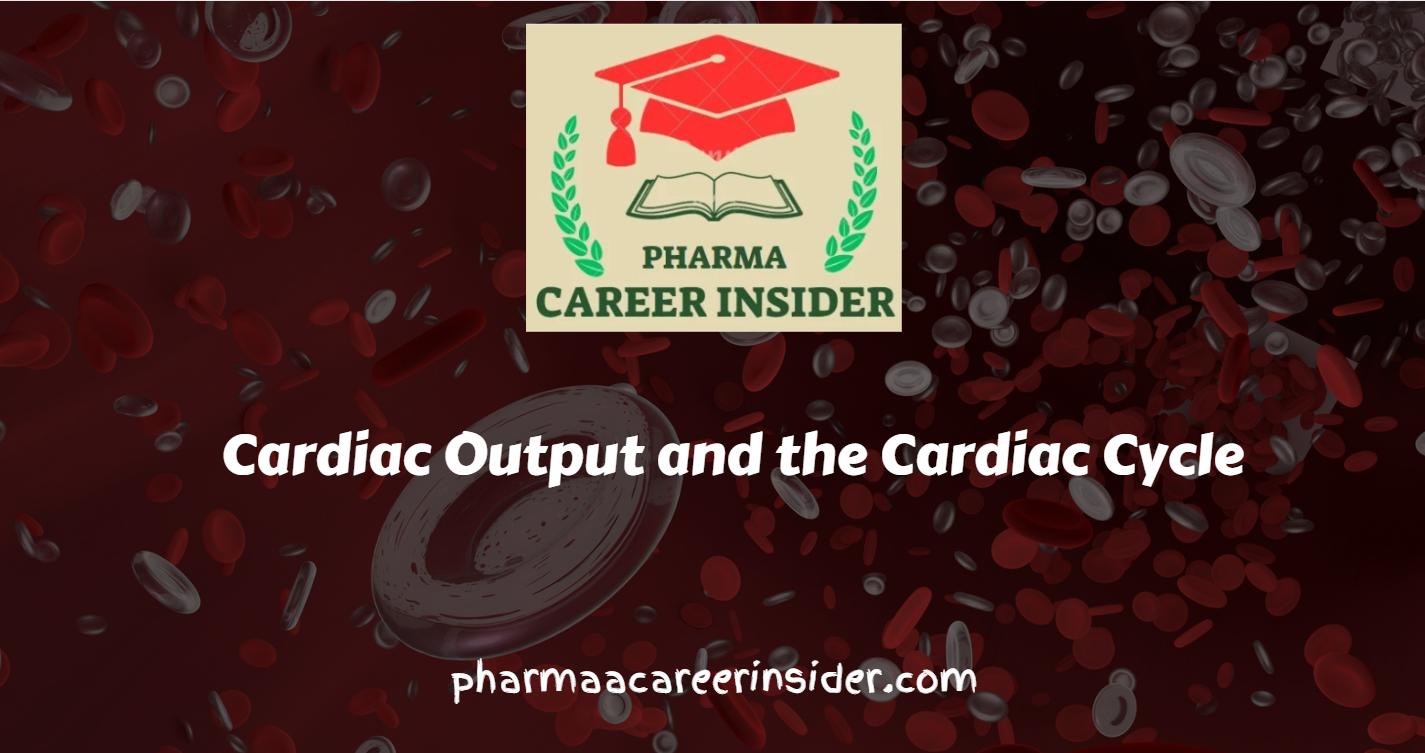Cardiac output and the cardiac cycle are fundamental concepts in cardiovascular physiology, describing how the heart functions to pump blood throughout the body. Understanding these processes is crucial for assessing heart health and overall circulatory function.

Here’s a detailed note on cardiac output and the cardiac cycle:
Cardiac Output (CO)
– Cardiac output is the volume of blood pumped by the heart per minute, usually measured in milliliters or liters per minute (mL/min or L/min).
– It is a key indicator of how effectively the heart is performing its pumping function and how well it is meeting the body’s oxygen and nutrient demands.
Calculation of Cardiac Output
CO = Heart Rate (HR) x Stroke Volume (SV)
– Heart Rate (HR): The number of heartbeats per minute, typically ranging from 60 to 100 beats per minute in a resting adult.
– Stroke Volume (SV): The amount of blood pumped by the left ventricle with each heartbeat. It is usually around 70 mL per beat in a resting adult.
Cardiac Cycle
The cardiac cycle refers to the sequence of events that occur during one complete heartbeat. It is divided into two phases:
1. Systole
– Systole is the phase of the cardiac cycle during which the heart contracts and pumps blood into the arteries.
– It is further divided into atrial systole (contraction of the atria) and ventricular systole (contraction of the ventricles).
– During atrial systole, the atria contract to push blood into the ventricles.
– Ventricular systole involves the contraction of the ventricles, which forces blood into the pulmonary artery and aorta.
2. Diastole
– Diastole is the phase during which the heart relaxes and refills with blood.
– Atrial diastole occurs when the atria relax, allowing them to fill with blood from the venous circulation.
– Ventricular diastole takes place as the ventricles relax, enabling blood to flow into them from the atria.
Cardiac Cycle Events
1. Atrial Contraction (Atrial Systole): The SA node triggers the atria to contract, pushing blood into the ventricles while the ventricles are in diastole.
2. Ventricular Contraction (Ventricular Systole): Once the ventricles are filled, the electrical signal travels down the bundle of His and Purkinje fibers, causing ventricular contraction. This leads to the ejection of blood into the pulmonary artery and aorta.
3. Isovolumetric Relaxation: Following ventricular contraction, both atria and ventricles are in diastole. This is the phase during which the heart chambers relax, and all valves are closed.
4. Atrial Filling: The atria receive blood from the venous circulation as they relax, and the ventricles continue to fill.
Significance of the Cardiac Cycle and Cardiac Output
– The cardiac cycle ensures that blood is continuously circulated throughout the body, supplying oxygen, nutrients, and removing waste products.
– Cardiac output reflects the heart’s ability to meet the body’s metabolic demands and maintain tissue perfusion.
– Various factors, including heart rate, stroke volume, and the autonomic nervous system, influence cardiac output.

